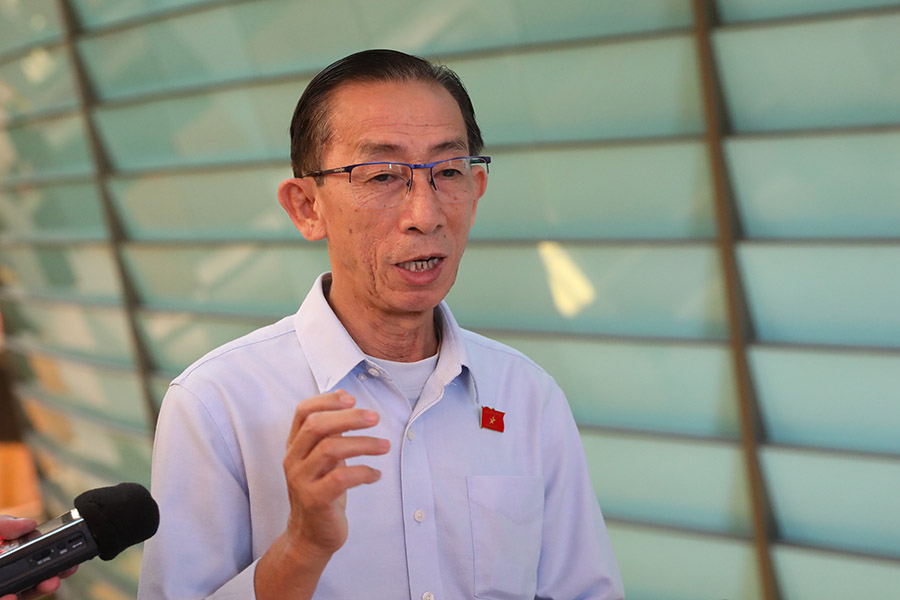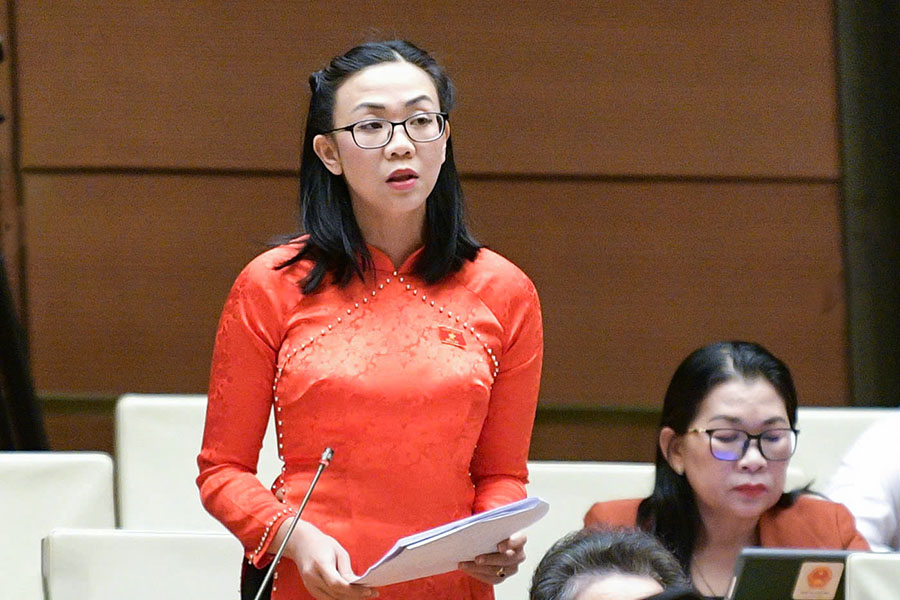On June 12, the National Assembly officially passed a Resolution of the National Assembly on the arrangement of provincial-level administrative units in 2025. The country has 34 provincial administrative units (ADUs), including 06 centrally-governed cities and 28 provinces.
Speaking about this historic moment, delegate Tran Hoang Ngan - National Assembly Delegate of Ho Chi Minh City expressed his joy. He assessed that when the Resolution was passed, it created an important driving force to support the country with conditions to accelerate development, becoming a high-income developed country in the coming time.
According to the delegate, the formation of 34 provinces and cities after the merger creates new development space, especially the interaction of coordination and support between localities, creating superiority and breakthroughs.
He said that in recent times, there have been localities with very limited development space. However, when it was merged with another locality, a new area was formed.

Assessing the merger of 3 provinces and cities including Ho Chi Minh City, Ba Ria - Vung Tau and Binh Duong, delegate Tran Hoang Ngan said that this is an opportunity to make a breakthrough in economic development.
"Binh Duong is the industrial park capital of the country. However, to develop in depth in high technology, it must be associated with the center for scientific research, research and development of Ho Chi Minh City, or must be associated with the logistics axis of seaports...
In addition, the free trade zone of Ba Ria - Vung Tau will be enhanced when connected with the International Financial Center in Ho Chi Minh City, that is a resonance", said delegate Tran Hoang Ngan.
He also assessed that this 9th session is a very special session among many sessions he has participated in. A session in which delegates have to invest a lot of effort and intelligence, working day and night, all day, Saturday and Sunday.
"But we are very happy to see the future. All for the biggest goal of the nation's rise, towards becoming a high-income country in the coming time", said delegate Tran Hoang Ngan.
Delegate Trinh Thi Tu Anh - National Assembly Delegate of Lam Dong province assessed - "this is a historic moment that helps our new province have more potential for development in the future".
The new Lam Dong province was formed after merging Dak Nong, Binh Thuan and Lam Dong provinces, becoming the province with the largest area in the country, including both mountainous and coastal areas.
According to delegate Tu Anh, after the merger, Lam Dong has the 8th largest economic scale in the country, with great room for development.
"In terms of economy, we have potential and advantages from tourism (on land and sea), to mineral exploitation (boxit).
Recently, when working with the Standing Committees of the Provincial Party Committees of Dac Nong, Binh Thuan, Lam Dong provinces, General Secretary To Lam also suggested many development orientations for the (new) Lam Dong province to take off to rise up with the country in the era of national growth", said delegate Tu Anh.

According to the delegate, in recent months, local authorities have "worked day and night" under the close direction of the Party and the Government to propose a reorganization plan.
" Planning is not a combination of "schooling" approved planning of 3 provinces. We must think, think, and collect opinions from all levels, sectors, and people on the orientation of the new provincial planning.
This is a very difficult and complicated matter. However, with proactiveness and determination, up to this point, the development orientation of the new province has been planned," delegate Tu Anh shared.
The delegate also hoped that in the coming time, the Government and the Central Government will create the most favorable conditions for the locality to best implement the planning.











